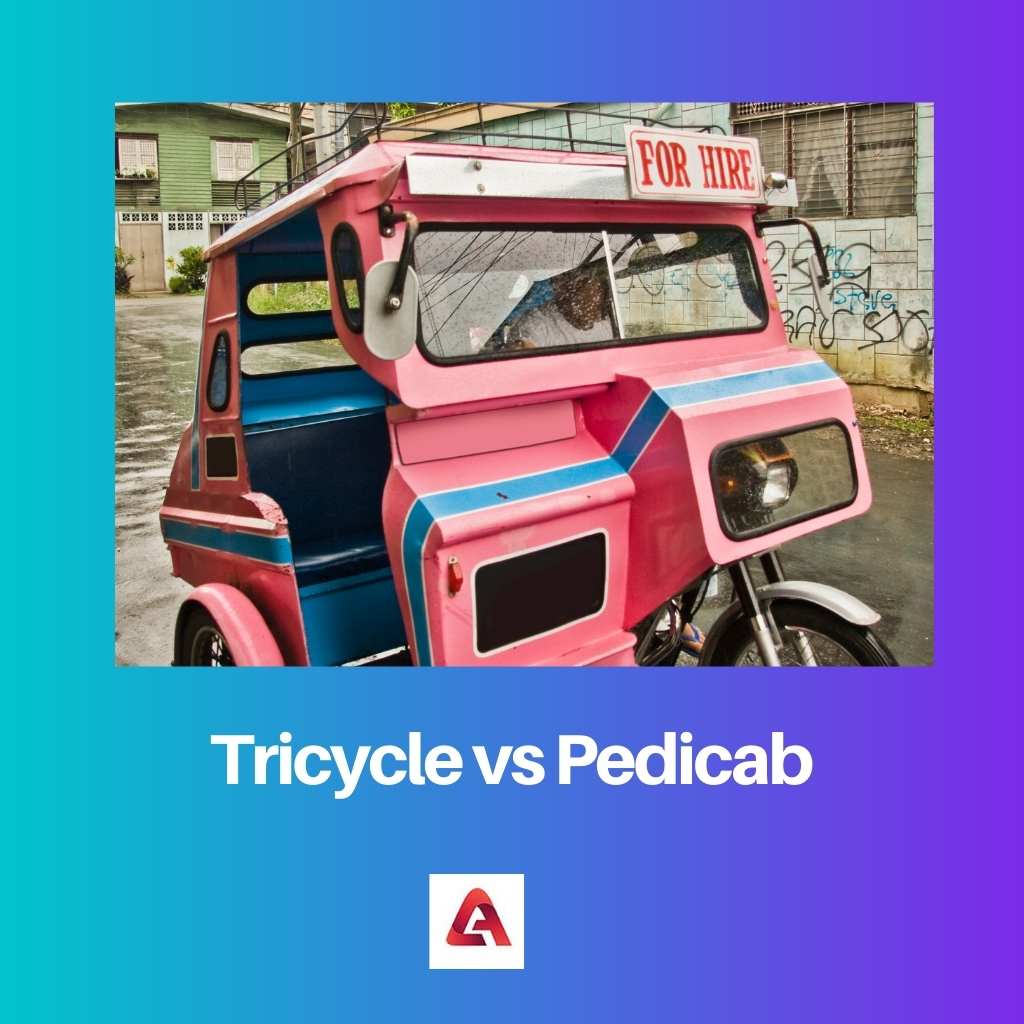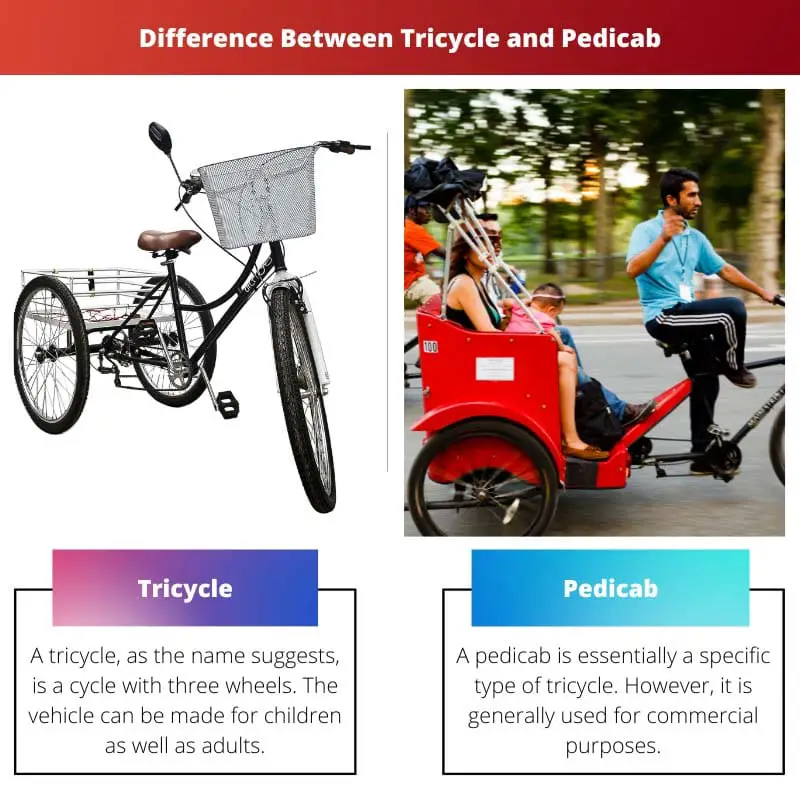Tricycles and pedicabs are popular types of cycles that are used extensively across the world. Each of them is used for a different purpose by different people.
However, they have several similarities based on various aspects, especially considering the fact that each of them has three wheels. Nonetheless, they have several differences between them as well.
Key Takeaways
- Tricycles are three-wheeled vehicles, either human-powered or motorized, used primarily for personal transportation or recreation.
- Pedicabs are larger, human-powered, three-wheeled vehicles designed to carry passengers for short distances, used in urban areas for sightseeing or taxi services.
- Both tricycles and pedicabs provide unique transportation options, with tricycles catering to personal use and pedicabs focusing on passenger services.
Tricycle vs Pedicab
Tricycle has three wheels for balancing purposes and is used by kids. Tricycles can be motor operated or manually operated by human force by constantly moving the pedals. Pedicab is used by adults and is used for transportation purposes. It has seats for passengers along with a driver seat.

Tricycles are human-powered, like any other cycle. They are driven with the help of pedals that are located on either side of the vehicle. Some tricycles can be powered by motors as well.
However, they are mostly used by disabled people. Human-powered cycles do not have an extra seat for passengers to sit on.
Meanwhile, a pedicab can be human-powered or motor-powered as well. These are mostly driven by adults for the purpose of carrying passengers from one destination to the other.
A popular example of this is a cycle rickshaw, which is extremely popular in countries like India, Bangladesh, and even many parts of Africa.
Comparison Table
| Parameters of Comparison | Tricycle | Pedicab |
|---|---|---|
| Type | It is mostly human-powered. | It can be human-powered, or motor-powered. |
| Seating | It has a single seat for the rider. | It has extra seating for passengers. |
| Usage | It is mostly used for leisure. | It is mostly used for commercial purposes. |
| Rider | It is driven by children. | It is driven by adults. |
| History | It first came into use in the 1600s. | It first came into use in the 1880s. |
What is Tricycle?
A tricycle, as the name suggests, is a cycle with three wheels. The vehicle can be made for children as well as adults. However, the most popular forms of tricycles are made for children to ride for leisure.
The extra wheel in this case acts as a support for children who do not yet know how to balance a two-wheeled vehicle.
The first use of a tricycle can be dated back to 1655. Then, a disabled man used it as a vehicle to move around without hassle or much effort.
This vehicle did not originally have pedals, but hand cranks that could be turned in a circular motion for moving the vehicle forward. However, since then, the vehicle has gone through many modifications and adaptions.
Nowadays, tricycles can be human-powered, motor-powered, and even powered by a hand crank. It depends on the purpose of its use. Even gyms have different forms of static tricycles that can be pedalled for exercising.
Regardless, these vehicles come in many forms. Some of them include types such as tandem, tadpole, delta, and upright. Each of them has a different design and architecture which allows it to be used for different purposes by numerous people.

What is Pedicab?
A pedicab is essentially a specific type of tricycle. However, it is used for commercial purposes. It has extra seating space at the back of the rider’s seat, which allows space for other passengers to sit on.
Due to this, it is used by people who hire riders to take them from one place to the other.
Pedicabs first came into popular use in the 1880s in Singapore. Then, they were termed ‘cycle rikshaws’. Gradually, due to their efficiency and affordability, their use spread throughout other parts of Asia.
Nowadays, many places across the world have rikshaws as a means of transportation. Some of these places include India, Bangladesh, China, Malaysia, the Philippines, Indonesia, and even parts of Africa.
These vehicles are also becoming popular enough to be used in America and Europe.
Regardless, pedicabs have a huge impact on the economy as well. They are predominantly used in rural areas where cars and buses are not that accessible.
The vehicle is also a means for impoverished men to earn a daily living. Moreover, they can even be used to carry goods in agriculture and other industries.
However, modernized and congested urban cities are not very pedicab-friendly. Some places have even banned these vehicles despite them being one of the most eco-friendly modes of transportation.

Main Differences Between Tricycle and Pedicab
- Tricycles are mostly human-powered whereas pedicabs can be human-powered, or motor-powered.
- Tricycles have a single seat for the rider whereas pedicabs have extra seating for other passengers.
- Tricycles are mostly used for leisure whereas pedicabs are mostly used for commercial purposes.
- Tricycles are driven by children whereas pedicabs are driven by adults.
- Tricycles first came into use in the 1600s whereas pedicabs first came into use in the 1880s.

References
- https://journals.sagepub.com/doi/abs/10.3141/2570-06
- https://www.sciencedirect.com/science/article/pii/S0967070X12000546
